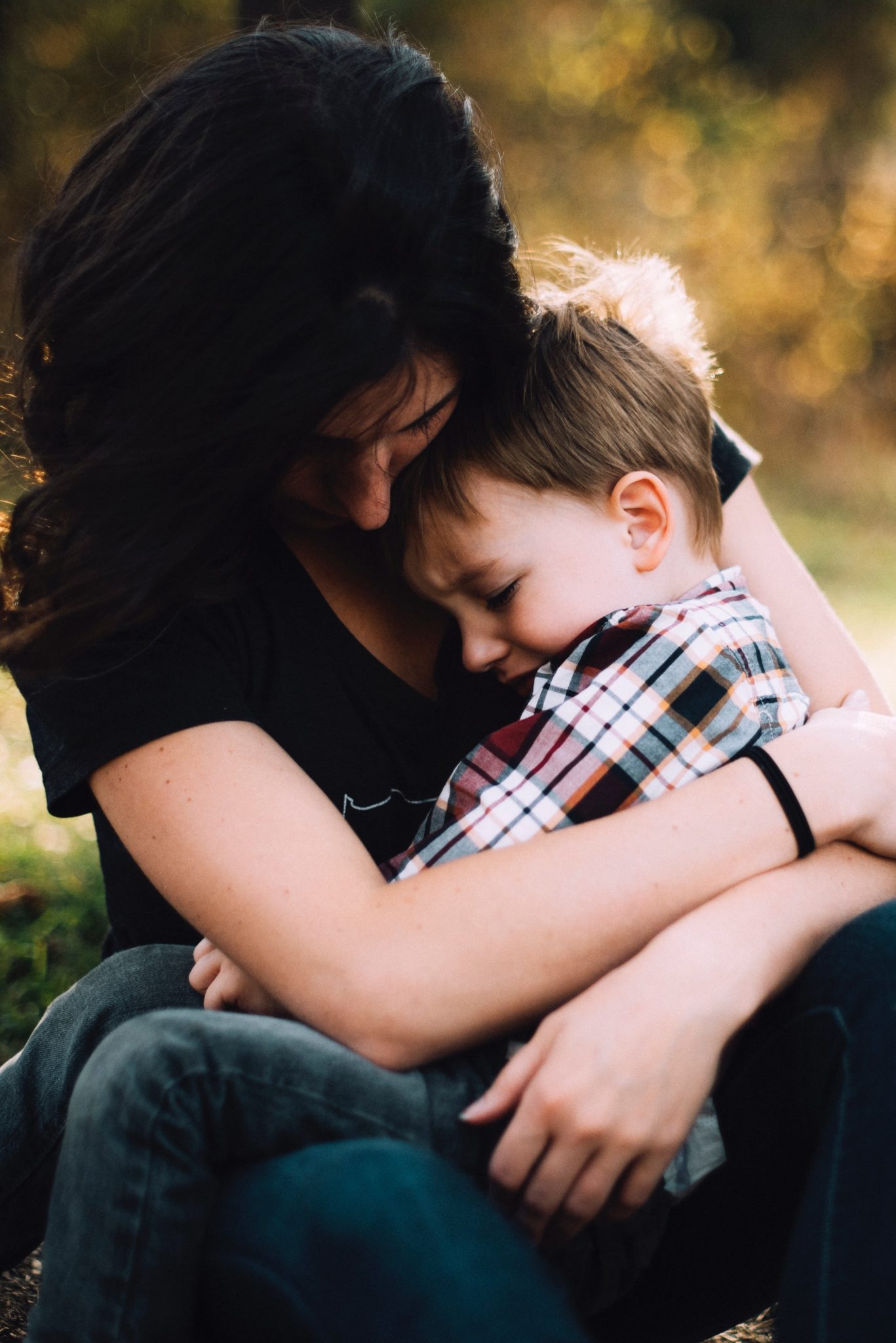
Grief is a complex emotion to process. Helping children deal with grief can be challenging for many, as this age group process grief differently than adults and teens. Depending on the age of the child, they may have different concepts of death and responses to grief. It is important to consider these age differences as well as the unique circumstances and personality of the child. Just like helping teens deal with grief (or even adults), helping children deal with grief requires patience and understanding.
How children process grief
How children process grief and understand death will vary greatly depending on their personalities, backgrounds, developmental level, age, and many other factors. A child may experience shock or confusion, as well as fear, sadness, or denial. If the person who has passed away played an important role in the child’s life, it may have a greater impact on them emotionally. Understanding these nuances is important in helping children deal with grief.
Grief in children at different ages
While the way children respond to loss can vary greatly, this guide can help outline a basic understanding of helping children deal with grief at different ages. However, there can be a great deal of overlap in how children process grief between age groups, as children move between developmental stages and ages.
Grief in Ages 0-2
Infants function in the present, which means the adults in their environment will greatly affect their reaction to loss. While they may not be able to understand a concept as abstract as death, they may be aware of a sense of loss or separation if the person played a significant role in providing care. This sense of separation can cause anxiety and result in crying, changes in sleeping or eating habits, or decreased activity. Providing a nurturing routine and schedule can help ease the anxiety the infant may feel.
Grief in Ages 2-4
Permanence is a difficult concept for this age group. While children between two and four years old may be able to use language, they still largely function in the present. Even after a trusted adult explains that the deceased person will not return, the child may ask for them again an hour later or the next day.
Similar to infants, toddlers respond to the emotions of the adults in their environment. If the person who has passed provided a great deal of care and stability to the toddler’s life, their loss will have a more significant impact. It is common for toddlers to be confused, frightened, or withdrawn during this time. Providing reassurance and routine can help soothe the discomfort of such a major life change.
Grief in Ages 4-7
Grief in children at this age group may have a more complex concept of death than infants and toddlers, but they may still struggle with the permanence of the loss. Some children may believe that the person they have lost will return, or that something they said or did caused the loss. Routine is important to this age group as well, so providing comfort and stability is essential.
The expression of grief in children of this age group can vary greatly. Some children may appear unaffected, but this is likely not the case. They may be in shock or unable to acknowledge this reality yet. Other children’s emotions may be guided by the adults in their environment as they have not yet learned how to regulate or express their own feelings.
Grief in Ages 7-10
At this age, children may begin to see grief as more permanent. They may ask difficult or candid questions about death and the afterlife as this is often an unexplored concept. As with children of all ages, the impact of the death will likely depend on the role the person played in the child’s life.
Grief in children ages seven to ten may begin to fear that others in their lives could die as well. They might begin to fear their own death or consider ways to prevent death in the past or future. They may even take on responsibilities the deceased once took care of, such as doing chores or caring for others, as a way of feeling connected to them.
Grief in Ages 10-12
Children in this age group have often begun to form their own identities and sense of independence from adults. They may also have stronger connections with their peers, which can play a role in how they process grief.
While this age group may be better equipped to process the abstract concept of grief, they may have social, cultural, or practical questions about it. They may also feel isolated or removed from others, or feel compelled to hide their feelings from peers. This can make helping children deal with grief in this age group more difficult.
Recognizing grief in children
Because grief looks different at each developmental stage (and will be different in every child), recognizing grief in children can be difficult. Crying, anger, and withdrawal are some of the most common signs of grief in children, but there are other more nuanced expressions of grief in children as well.
Infants, toddlers, and young children (under seven) may temporarily display regressive behavior, such as returning to thumb-sucking or bed-wetting, even if those behaviors had previously stopped. Children in these age groups may also have changes to appetite or sleep patterns, even if they do not show obvious signs of grief like crying or anger.
Recognizing grief in children ages seven and up can be more complex. Crying, anger, moodiness, isolation, and changes in appetite or sleep pattern are common among this age group, but they are not a given. Children over age seven may also show little emotion at all. This does not mean they don’t feel the pain of the loss, but they may not be ready to process it yet or may hide their feelings from peers or adults.
Resources to help children with grief
Helping children deal with grief can be complex, but it is certainly not impossible. One of the most important systems of support you can put in place is a sense of stability and normalcy. If the death of a loved one has disrupted a child’s daily routine, it can help to incorporate familiar elements of that routine into their new one.
Also, do not be surprised if grief seems to subside and return later on. Intense feelings of grief can last a long time, and both adults’ and children’s relationship to the loss can change over time. Let them know that their feelings are normal and provide options of healthy expression. Invite children to express their grief by telling stories or sharing memories about the person they have lost or encourage them to write or draw what’s on their minds.
There are also many books on helping children deal with grief that may be useful. Many are designed for children and adults to read together, while others may serve as guidebooks for adults providing support to the child(ren) in their lives.
Grief counseling for children
There are many resources for helping children deal with grief such as individual counseling, family counseling, and group counseling. The Children’s Bereavement Center provides an excellent list of organizations that can help. The National Alliance for Grieving Children can also help you find local support through their website.
The staff at Bateman-Allen funeral home is here to support you during this difficult time. If you have questions about our services, please contact us today.



Recent Comments